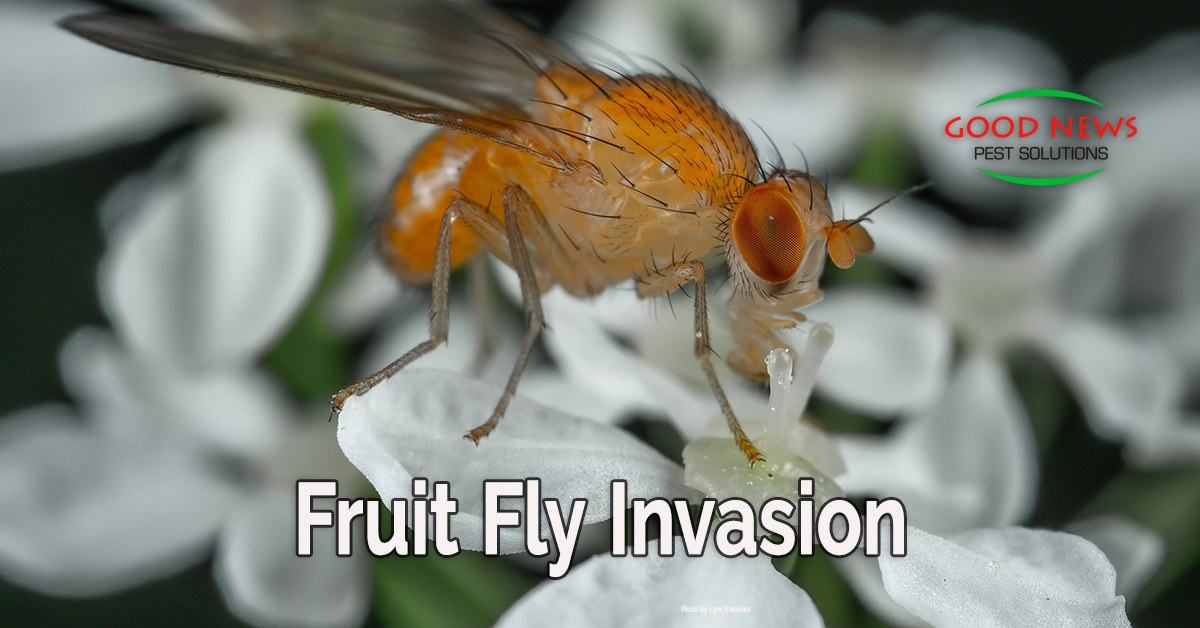
Fruit Fly Invasion
Last month, a new invasive fruit fly was found in an area of California known for its vibrant farmer’s markets.
More than 20 Asian Tau fruit flies were found in an unincorporated area north of the city of Los Angeles, prompting a quarantine of produce encompassing an area of 79 square miles. The area is surrounded by mountain ranges, approximately 20 miles outside of Los Angeles proper and includes portions of the city of Santa Clarita.
The quarantine is said to be the first of its kind in the Western Hemisphere for the Zeugodacus Tau fruit fly, described as a serious pest for both agriculture and natural resources. Entomologists at the California Department of Food and Agriculture (CDFA) believe the flies were imported by accident into the state by visitors carrying produce that was not inspected.
No surprise that the CDFA & the Los Angeles County Agricultural Commissioner are setting up inspection points all around the quarantine zone – an area 200 meters to any side of where the initial fruit flies were located.
History Repeats Itself
The California quarantine is reminiscent of a similar situation in Pinellas County this time last year. In that case, Oriental fruit flies were found in the Clearwater – St. Petersburg area, and a quarantine zone was set up that effectively eradicated the Bactrocera dorsalis.
One of the world's most serious exotic fruit flies, the Oriental fruit flies have snuck into the Sunshine state several times over the past 60 years – brought by unsuspecting overseas visitors.
In fact, since 1929, Florida has spent more than 70 million dollars to battle exotic fruit fly infestations. And that’s not even taking into account the staggering economic impact to our produce industry.
Fruitful Flies
About the same size as a common housefly, both the Tau and the Oriental fruit flies lay their eggs in produce. When the eggs hatch, the larvae tunnel through the fruit, making it unfit for consumption. Fruit flies can be a problem year round but are especially common during late summer and early fall because they are attracted to ripened or fermenting fruits.
Outside of the more dangerous exotic fruit flies, we have more common fruit flies across the Gulf Coast of Florida. Slightly smaller, a tan color, and with distinctive red eyes, these insects cause less damage but can still be a nuisance.
They are often spotted around decomposing or overripe fruits and veggies, as well as trash cans, dirty dishes, and compost areas. The best way to treat for fruit flies is simply to remove their attraction – the rotting fruit or crumbs – and then sanitize any surfaces where they’ve been spotted.
Fruit flies are also attracted to standing water just like Biting Midges and our ever popular mosquitoes. So, kill three insects with one stone by pouring out that birdbath, pet bowl or wiping up that puddle.
And to keep the mosquitoes away, why not try our No Bite Zones Mosquito Protection Program and turn those biting momma mosquitoes into vegans. It’s affordable and we can deliver it along with your regular periodic service visits. For more details, just give us a call!
Proudly Serving
Sun City Center, Ruskin, Palmetto, Parrish, Ellenton, Bradenton, Anna Maria, Holmes Beach, Bradenton Beach, Longboat Key, Lakewood Ranch, University Park, Myakka City, Sarasota, Siesta Key, Osprey, Nokomis, Casey Key, Venice, Englewood, North Port, Port Charlotte, Punta Gorda, Arcadia
Things You Can Do
Pay Your Bill Online
Leave Us a Review
Request a Free* Termite Inspection
Stop Mosquito Bites
Get Rid of Rodents
Get a Termite Damage Warranty
Get Pest Control for Your Attic
Get Pest Control for Your Business Request Prayer
Corporate Address
1080 Enterprise Court, Ste A
North Venice, FL 34275
Call Now: (941) 412-9610
Text: (941) 412-9610
Fax: (941) 412-0080
